Gravity(Attraction) of Kyoto 11 “Baisa Nakamura” is a fantastic tea factory and cafe that challenges the highest quality Uji tea.
Yoshie Doi
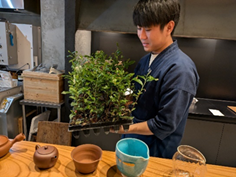 Photo taken on July 2, 2025: Nakamura Eiji, head of Baisa Nakamura. |
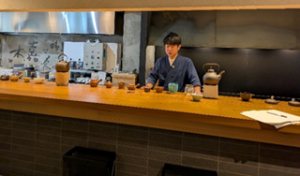 Store |
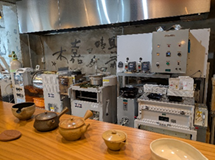 A miniature version of the tea-making equipment found on tea farms. Tea leaves. |
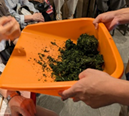 |
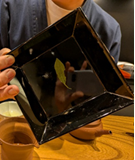
|
It is said in ancient Chinese documents that the first medicinal herb that mankind encountered was tea. The efficacy of tea has been known since ancient times, and in Japan, Japanese tea is drunk as a detoxifier.
It seems that tea was originally consumed in China as tea leaves, but with the discovery of fire it came to be used like a boiled vegetable, and the way of drinking it eventually came to be known.
The recently discovered Hagama and Kasha in Nagaokakyo-shi, Kyoto Prefecture, prove that tea drinking was practiced during the reign of Emperor Kanmu, and it has been pointed out that the custom has existed since the Nara period. Further documents relating to tea have been left behind during the reign of Emperor Saga.
Eisai Shonin wrote Japan’s first tea book, “Kissa Yojoki,” and there is an anecdote about how when Minamoto no Sanetomo, the third shogun of the Kamakura shogunate, was suffering from a hangover, he recommended tea as an “elixir for healing.” The effects were immediate, and he recommended tea to his subordinate warlords as well
The two monks, Eisai and Myoe, became acquainted, and Eisai gave Myoe some tea seeds, which were then sown in the valley of Kosan-ji Temple, leading to the growth of tea plants. Tsuganoo tea was born, and the area became known as “Honcha” (the number one tea producing area in Japan).
He then moved production from Tsuganoo to Uji, where he taught farmers how to plant tea seeds. He instructed them to ride horses into the fields and sow the seeds in the hoofprints. Just imagining it brings the scenery into your mind.
In Kyoto, there are some teas that are made only in Kyoto, such as Kyobancha and Ao Hojicha. Teas that have been carefully prepared are popular as they blend well with the light flavors of Kyoto cuisine. Sencha is served at mealtimes, and some restaurants serve Hojicha during meals, and many restaurants in Kyoto offer matcha after meals.
In July, I visited Baisa Nakamura in Uji. Eiji Nakamura, a 34-year-old young man who has mastered tea leaves, was born in Uji and trained at an organic tea farm in Kagoshima. He knows all about the goodness of Japanese tea.
When new tea is available, we purchase it from tea farmers and immediately freeze it using vacuum nitrogen gas to remove the carbon dioxide and oxygen from the air. Then, when it’s time to process the tea, we thaw it, and Uicha Nakamura is full of ingenious ideas to always be able to enjoy new tea. You can enjoy freshly picked, rolled, and brewed tea. This luxurious way to enjoy Japanese tea can only be experienced here. It is the only shop where tea processing equipment is placed inside the store, and you can enjoy tea while watching the tea processing process.
The equipment that is normally found on tea farms has been made smaller for the store, so you can see how tea is made in the store. The smell of the tea leaves and the gentle sounds of the hand-rolled tea-making machine make the tea. Good tea makes the leaves return to single leaves when hot water is poured into them. Please see photo 5.
The greatest feature of Uji tea is its strong aroma. Moreover, it is the healthiest drink for Japanese people and is the perfect companion to Kyoto cuisine. Please enjoy this delicious drink and Kyoto cuisine. Hats off to Eiji Nakamura for his ability to think outside the box and come up with some truly unique ideas.
The end of document
Translated by Masami Otani
